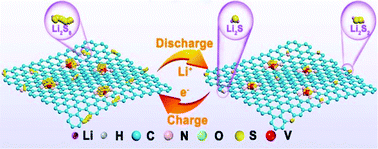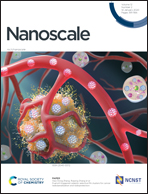Accelerated polysulfide conversion on hierarchical porous vanadium–nitrogen–carbon for advanced lithium–sulfur batteries†
Abstract
With high theoretical specific density, low cost, and non-toxicity, Li–S batteries are regarded as a promising candidate for next-generation energy storage systems. However, the shuttling of soluble Li polysulfides (LiPSs) results in self-discharge and rapid capacity degradation. Herein, nitrogen-doped hierarchical porous carbon with embedded highly dispersed vanadium (V)–Nx sites (V–N–C) is developed as a high-performance Li–S battery cathode for the first time. The metal–organic polymer supramolecule structure formed by the electrostatic/hydrogen bond interaction of chitosan–VO3− strongly stabilizes V to generate a high density of V–Nx/C sites. During the discharge/charge process, the unique V–Nx/C active sites can serve as efficient catalysts to accelerate the redox kinetics of LiPSs, while the hierarchical porous carbon structure of V–N–C benefits the diffusion/transfer of Li+/e− and suppresses the shuttling of LiPSs. As a result, the S/V–N–C composite delivers a high specific capacity of 1111.2 mA h g−1 at 0.5C and maintains 573.6 mA h g−1 at 5C with a low capacity decay rate of 0.087% per cycle (over 500 cycles at 1C). The rate performance of the developed V–N–C cathode in Li–S batteries is superior to that of most of the reported M–N–C and carbon material/metal compound composite electrodes.

- This article is part of the themed collection: 2019 Nanoscale HOT Article Collection


 Please wait while we load your content...
Please wait while we load your content...